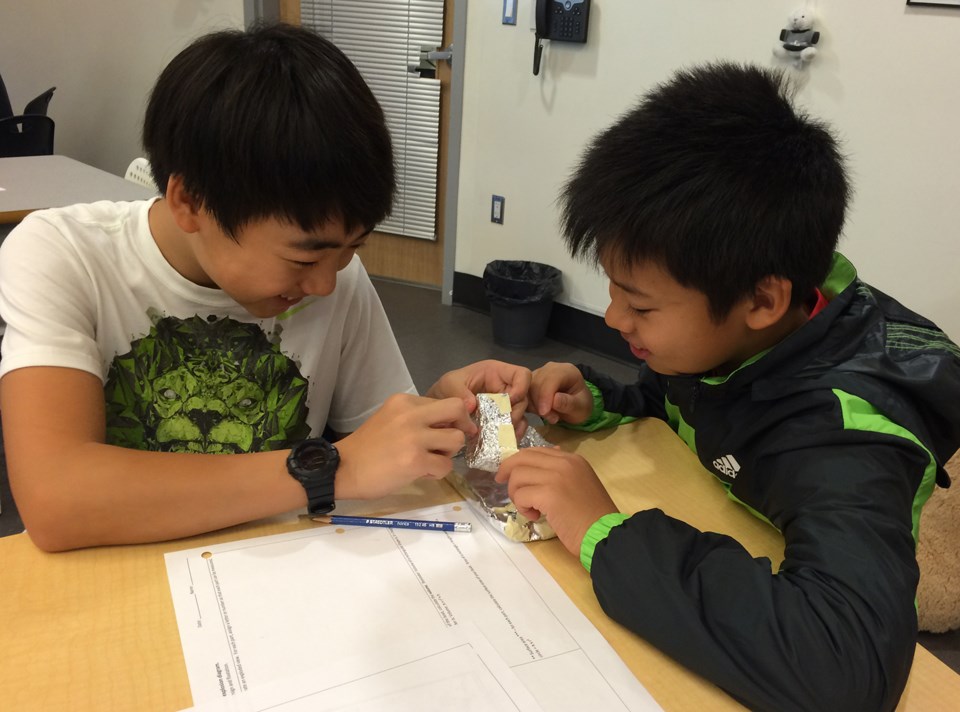New school supplies? Check.
New shoes, clothes and backpack? Check.
New curriculum? Check.
Parents whose children are heading back to school next Tuesday will be pioneers of a revised curriculum that B.C.'s Ministry of Education hopes will help young people adapt to changes in society, jobs and technology.
Students in kindergarten to Grade 9 are getting the new curriculum this year while changes are only being piloted in some Grade 10 to 12 classes, with full implementation of the high school curriculum next year.
The revisions, the first in more than a decade, will focus more on problem solving and communicating learning than memorization of rote facts and was a necessary change says Ken Christensen, first vice-president of the Coquitlam Teachers' Association.
"I personally like the shift away from rigid curricular goals and outcomes. It's about thinking about thinking," Christensen told The Tri-City News this week. "The knowledge base becomes obsolete quickly. Rather than filling kids full of knowledge — when they had to learn all these particular facts — you need to train people to have more insight, especially on global issues."
But Christensen cautions against having expectations that the new curriculum will be implemented quickly because resources, training and new teaching strategies will take time to get in place.
For example, the new curriculum stresses inquiry based learning where students identify a problem or ask a question and then work on solving it. A teacher will need to be able to support 30 students going in 30 different directions with equipment and materials while also helping them identify sources of information.
"They can certainly do it," Christensen said, "but it's resource-dependent."
He's also concerned that the province hasn't put enough into teacher training, although two days of professional development on the new curriculum have already taken place, and another is slated for Nov. 14.
For example, the new curriculum is supposed to include training in coding — the language used to make computers work — but it's not known how the province's plan to spend $6 million on training, coding curriculum and equipment will trickle down to districts.
Christensen also said he doesn't know exactly how teachers will implement coding in the curriculum. "I think that was a bit of electioneering early on. There's a lot more to this curriculum that this coding [announcement] doesn't answer."
Still, he is optimistic that with time and resources, the new curriculum will be successfully implemented into the classroom, noting some schools and teachers will likely be faster at it than others.
"We can do it, we would just like more support for doing it," Christensen said.
REPORT CARD CHANGES
Changes are coming in report cards, too.
The province's new student reporting policy came into force July 1 and requires districts to provide regular reports on how students are progressing on required learning outcomes and consult with the public, and must also provide the education ministry with a copy of their reporting policy.
But don't expect big changes to SD43 report cards anytime soon.
Assistant superintendent Reno Ciolfi said only one school, Eagle Mountain middle, and some Montessori classes, are experimenting with report cards that don't have letter grades. All kindergarten to Grade 9 report cards will contain a new section that describes how students are doing in core competencies of thinking, communication and personal and social skills.
But the district has until the end of the school year to add this to report cards.
As well, Ciolfi said the district will be asking parents how they want their child's learning to be communicated to them.
"What we're really trying to achieve is to make it [student reporting] meaningful and aligned with the new curriculum," Ciolfi said.



